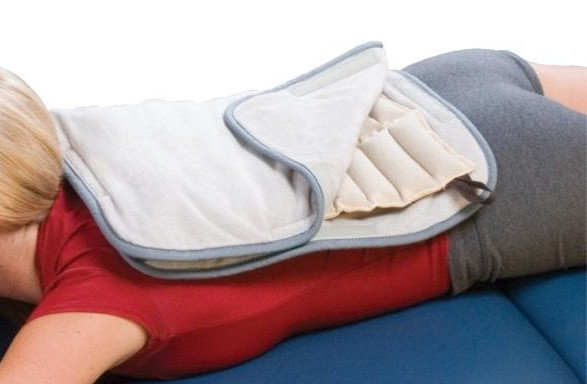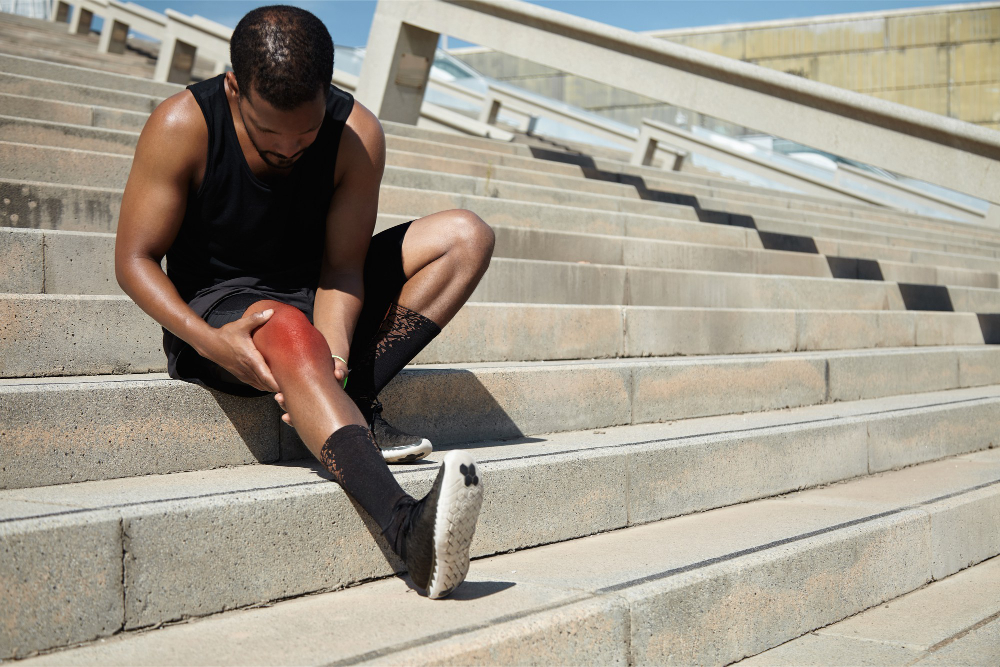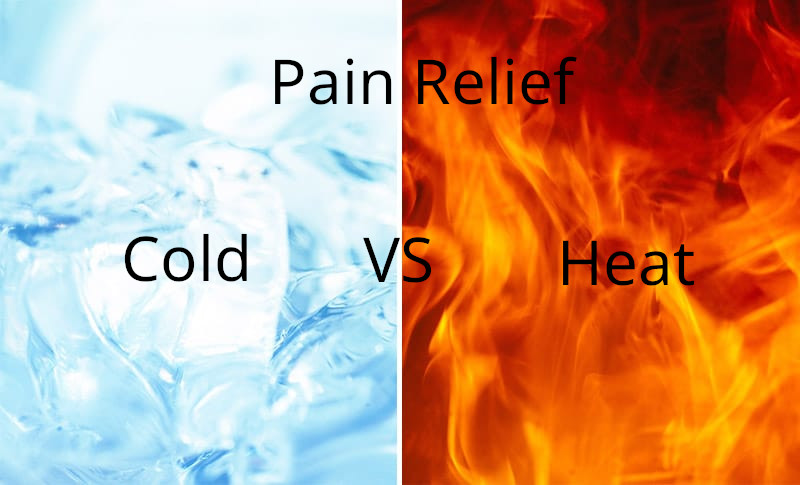Pain affecting millions of people worldwide. According to Statistics Canada’s 2017 Canadian Community Health Survey, approximately 7.6 million Canadians aged 15 and older (about 1 in 4 Canadians) reported experiencing chronic pain. This represents 23.9% of the population. A more recent study published in the journal Pain Reports in 2021 found that the prevalence of chronic pain in Canada had increased to 25.4% in adults.
When it comes to managing pain, two of the most common and accessible remedies are heat and ice therapy. These methods have been used for centuries, but the debate over which to use and when continues. A survey conducted by the Chronic Pain Association of Canada found that 50% of chronic pain sufferers have used both heat and cold therapy as part of their pain management strategies, but many were unsure about which was more effective for their specific condition.
In this post, we’ll explore the physiotherapist’s perspective on using heat versus ice for pain relief. We’ll delve into the science behind each method, discuss their appropriate applications, and provide practical tips to help you make informed decisions about managing your pain effectively.
Understanding the basics about heat and cold therapy:
Understanding these basics provides a foundation for making informed decisions about when to use heat or cold therapy for pain relief. The physiological effects and mechanisms of action explain why each therapy is recommended for different types of pain and at different stages of injury or chronic conditions.
How Heat Therapy Works
- Physiological effects:
- Increases blood flow to the affected area
- Dilates blood vessels, improving circulation
- Relaxes muscles and reduces stiffness
- Increases tissue elasticity
- Pain relief mechanism:
- Stimulates sensory receptors, reducing pain signals to the brain
- Promotes healing by delivering oxygen and nutrients to the area
- Helps remove waste products from tissue damage
- Types of heat therapy:
- Dry heat (heating pads, hot water bottles, heat wraps)
- Moist heat (warm baths, steamed towels, moist heating packs)
How Cold Therapy Works
- Physiological effects:
- Constricts blood vessels, reducing blood flow to the area
- Decreases tissue temperature
- Reduces nerve conduction velocity
- Decreases muscle spasms
- Pain relief mechanism:
- Numbs the area, providing an analgesic effect
- Reduces inflammation and swelling
- Slows down nerve impulses, interrupting pain signals
- Types of cold therapy:
- Ice packs or frozen gel packs
- Cold compresses
- Ice massage
- Cryotherapy chambers (for whole-body treatment)
Comparison of Heat and Cold Therapy
- Timing of application:
- Heat is generally better for chronic conditions and before activity
- Cold is typically used for acute injuries and after activity
- Depth of penetration:
- Heat penetrates deeper into tissues
- Cold affects more superficial tissues
- Duration of effects:
- Heat effects tend to last longer after application
- Cold effects are more immediate but may be shorter-lasting
- Risks and precautions:
- Heat: risk of burns, not suitable for acute injuries or inflammation
- Cold: risk of frostbite, not suitable for certain circulatory conditions

When to Use Heat Therapy
- Safety Warnings
- When using heat therapy, always place a cloth barrier between the heat source and skin to prevent burns. Limit sessions to 15 to 20 minutes and prevent falling asleep during treatment. People with poor circulation, diabetes, or numbness should consult a doctor before use. Avoid heat on recent injuries, open wounds, or during pregnancy. Don’t use on areas with swelling or inflammation.
- Chronic Pain Conditions
- Lower back pain
- Heat can help relax tense muscles and improve flexibility
- Particularly effective for non-specific chronic low back pain
- Arthritis
- Can ease joint stiffness, especially in the morning
- May improve range of motion in arthritic joints
- Fibromyalgia
- Heat therapy can help alleviate widespread muscle pain
- Can be particularly soothing before sleep
- Lower back pain
- Muscle Stiffness and Tension
- Neck and shoulder tension
- Heat can help loosen tight muscles in these areas
- Particularly useful for tension headaches originating from neck strain
- Post-exercise muscle soreness
- Applying heat 24-48 hours after intense exercise can aid recovery
- Helps increase blood flow to sore muscles, potentially speeding up healing
- Menstrual cramps
- Heat can help relax the uterine muscles and ease pain
- Often provides more relief than over-the-counter pain medications for some women
- Neck and shoulder tension
- Before Exercise or Physical Activity
- Warm-up enhancement
- Applying heat before stretching can increase muscle elasticity
- May help prevent injury by improving flexibility
- Performance preparation
- Can help increase blood flow to muscles, potentially improving performance
- Particularly useful in cold environments or for people with chronic muscle tightness
- Warm-up enhancement
- Stress and Tension Relief
- Psychological benefits
- The warmth can have a calming effect, reducing stress and anxiety
- May help improve sleep quality when used before bedtime
- Complementary therapy
- Can be used alongside relaxation techniques like deep breathing or meditation
- Psychological benefits
- Chronic Injuries in the Healing Phase
- After the acute phase (48-72 hours post-injury)
- Heat can help promote blood flow and aid the healing process
- Useful for lingering injuries that are no longer in the acute inflammation stage
- After the acute phase (48-72 hours post-injury)
- Timing and Duration
- Best times for application
- Often most effective in the morning to ease overnight stiffness
- Can be beneficial before bed to promote relaxation
- Recommended duration
- Generally 15-20 minutes at a time
- Can be applied multiple times a day, with at least 2 hours between applications
- Best times for application
- Methods of Heat Application
- Moist heat
- Often penetrates deeper and may be more effective
- Examples: warm baths, steamed towels, moist heating packs
- Dry heat
- More convenient for targeted application
- Examples: heating pads, microwaveable heat packs, infrared lamps
- Moist heat

When to Use Cold Therapy
- Safety Warnings
- While ice therapy is effective for many acute conditions, it’s not suitable for everyone. People with certain conditions like Raynaud’s syndrome or impaired circulation should consult a healthcare professional before using cold therapy. Additionally, ice should never be applied directly to the skin for prolonged periods to avoid frostbite or tissue damage.
- Acute Injuries (first 24-48 hours)
- Sprains and strains
- Helps reduce initial swelling and inflammation
- Most effective when applied immediately after injury
- Bruises
- Can minimize discoloration and swelling
- May help reduce pain associated with impact injuries
- Acute back pain
- Can help numb the area and reduce inflammation
- Particularly useful for sudden onset back pain due to muscle strain
- Sprains and strains
- Inflammation and Swelling
- Post-surgical swelling
- Often recommended by surgeons to manage post-operative edema
- Can help reduce pain and speed up recovery
- Chronic inflammation flare-ups
- Useful for conditions like rheumatoid arthritis during acute phases
- Can provide temporary relief from pain and swelling
- Gout attacks
- Cold therapy can help manage pain during acute gout flares
- May help reduce inflammation in affected joints
- Post-surgical swelling
- After Intense Exercise
- Delayed onset muscle soreness (DOMS)
- Applying ice immediately after intense workouts may reduce DOMS
- Can help manage pain and stiffness in the first 24-48 hours post-exercise
- Injury prevention
- Icing after high-impact activities may help prevent overuse injuries
- Particularly common in sports like running or tennis
- Delayed onset muscle soreness (DOMS)
- Headaches and Migraines
- Tension headaches
- Cold packs on the forehead or neck can provide relief
- May help constrict blood vessels and reduce pain
- Migraine relief
- Some individuals find cold therapy helpful in managing migraine pain
- Can be used alongside other migraine management strategies
- Tension headaches
- Burn Treatment
- Minor burns
- Immediate application of cold water or ice can minimize tissue damage
- Helps reduce pain and prevent further injury
- Minor burns
- Application Methods
- Ice packs
- Commercially available or homemade (e.g., frozen peas)
- Should be wrapped in a thin towel to protect skin
- Ice massage
- Using ice directly on skin in a circular motion
- Limited to 3-5 minutes to avoid tissue damage
- Cold water immersion
- Useful for injuries to hands, feet, or ankles
- Water temperature should be around 50-59°F (10-15°C)
- Ice packs
- Duration and Frequency
- Typical application time
- 15-20 minutes at a time
- Allow skin to return to normal temperature between applications
- Frequency
- Can be applied every 2-3 hours as needed
- Gradually decrease frequency as swelling and pain subside
- Typical application time
Find the Best Physiotherapy Clinic Near You for Heat and Cold Therapy
Whether you’re dealing with a sports injury or chronic pain that’s affecting your daily activities, understanding when to use heat or ice can make a significant difference in your pain management strategy. Physiotherapists have seen firsthand how proper use of heat and ice therapy can accelerate healing and provide relief for patients.
For residents of Pickering and Milton, Ontario, access to quality physiotherapy and pain management resources is readily available. Whether you’re dealing with an injury from hiking the Seaton Trail in Pickering or experiencing muscle strain after a day at the Milton Sports Centre, at Pro Fusion Rehab, our local physiotherapy clinics are equipped to guide you in the proper use of heat and ice therapy. Consult with one of our physiotherapists to develop a personalized plan that incorporates heat and cold therapy effectively, ensuring you stay active and pain-free throughout the year.
References:
- American Physical Therapy Association. (2022). “Hot and Cold Therapy: When to Use Each” https://www.choosept.com/health-tips/hot-and-cold-therapy-when-to-use-each
- Malanga, G. A., Yan, N., & Stark, J. (2015). “Mechanisms and efficacy of heat and cold therapies for musculoskeletal injury”. Postgraduate Medicine, 127(1), 57-65. https://www.tandfonline.com/doi/full/10.1080/00325481.2015.992719
- Harvard Health Publishing. (2020). “Heat or Ice? Which to Use for Back Pain, Pulled Muscles, and More” https://www.health.harvard.edu/pain/heat-or-ice-which-to-use-for-back-pain-pulled-muscles-and-more
- Physiopedia. “Contrast Bath Therapy” https://www.physio-pedia.com/Contrast_Bath_Therapy
- Arthritis Foundation. “Heat Therapy Helps Relax Stiff Joints” https://www.arthritis.org/health-wellness/healthy-living/managing-pain/pain-relief-solutions/heat-therapy-helps-relax-stiff-joints
